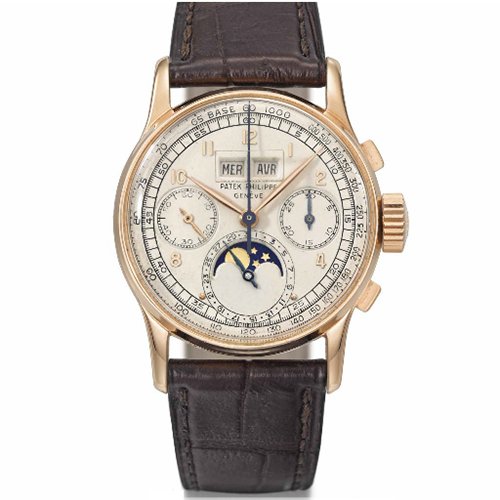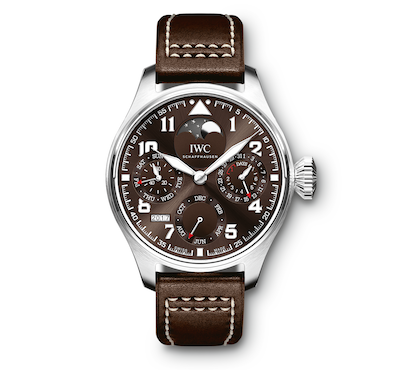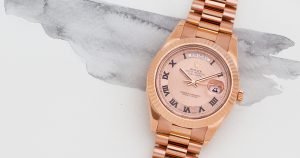What is a Perpetual Calendar Complication?
Perpetual calendar watches are one of the most coveted complications on the market today thanks to the wealth of information they offer the wearer and thanks to their harmoniously balanced dial designs. Essentially, a perpetual calendar displays the time and tracks and displays the day, date, month—automatically taking into account the different month lengths—and leap years. Most also display the phases of the moon, which you can find out more about here.
With the exception of a few perpetual calendar watches that will run for centuries, today’s perpetual calendar watches track the time and calendar information automatically until the year 2100, before needing a single adjustment on March 1, 2100. That necessary adjustment has nothing to do with the watch’s inability to continue tracking, but rather, is the result of a change in the Gregorian calendar. In the year 2100, the leap year that should occur will be skipped so that real time (according to the Gregorian calendar) coincides correctly with solar time.
Not all perpetual calendars offer the same indications in the same layout or format on the dial. Generally, watch brands use smaller subdials on the main dial to indicate the date, day of the week, and month. However, sometimes windows or apertures are used, and other times pointers and hands are used. A true “form follows function” concept, the ultimate design of the perpetual calendar watch dial follows the configuration of the movement.
How the Perpetual Calendar Complication Works

A Patek Philippe Perpetual Calendar watch
Considered a grand complication in watchmaking, perpetual calendar watches are incredibly complex, with many housing several hundred components in their movement. A labyrinth of gears, wheels, teeth, levers and more work together much like a basic computer program with a built-in mechanical memory of 1,461 days (four years). Essentially, the complex disk-and-lever systems are able to mechanically calculate the correct number of days in a month, whether it is composed of 28, 30 or 31 days, as well as the 29 days of February in a leap year.
Most perpetual calendar watches are designed to “think” that all months have 31 days. At the end of months with fewer days, the disk-and-lever systems mechanically inform the date wheel, which will skip through the unused dates to be in sync with the first day of the new month.
The calendar indications are synchronized using a long lever that guides the mechanical program and transmits the information to the appropriate display mechanisms, adjusting all of the watch’s other indications (day, leap year, etc.). The only real catch here is that the owner of a mechanical perpetual calendar watch must keep it wound (mechanical watch winders work beautifully for this), otherwise there is a bit of work involved in setting all of the functions to sync again.
History and Future of Perpetual Calendar Watches

A genuine IWC Big Pilot’s Perpetual Calendar with a sleek case and protruding crown
Early calendar timepieces date back to the 15th century when astronomical clock towers inspired clockmakers to incorporate such features into large clocks. Throughout the ensuing centuries, as clocks developed, so did calendar functions—moving from watches that needed to be adjusted at the end of each month (complete or full calendars) to annual calendar watches that need a single adjustment annually on March 1, and to the perpetual calendar that needs no adjustment at all until 2100 and for a century at a time thereafter.
The development of the perpetual calendar system has been credited to British watchmaker Thomas Mudge, who invented the detached lever escapement in 1755 that made the perpetual calendar pocket watch possible. That watch is at the British Museum in London. The idea of the perpetual calendar watch, though, somehow went untouched for about another century. In 1853, Jules Louis Audemars created a perpetual calendar watch as a school piece that later transformed so that in 1875, when Audemars joined with Edward Piguet, the final pocket watch perpetual calendar that was unveiled featured a circular cam consisting of 48 months accounting for differences in dates. This was the true precursor of today’s perpetual calendar watches.
Many of today’s haute horology brands have patents on their perpetual calendar watches for a new system, a new way to display the information, or for added functions. Breguet has a patented In-Line Perpetual Calendar watch that has an instant year change, and IWC has developed a system to display the moon phase from both hemispheres on its Portuguese Perpetual Calendar. A handful of brands, including Jaeger-LeCoultre, Patek Philippe, IWC, and Ulysse Nardin, have even developed calendars that are accurate beyond the year 2100.
Additionally, some brands combine the complicated perpetual calendar watch with other functions, including astronomical indications such as equations of time or star constellations, chronographs, and even tourbillon escapements. While these watches are expensive, they are well worth the money, as they are complicated and will definitely hold their value. Smartwatch collectors regularly scour the second-hand or pre-loved watch market to find a good deal on a perpetual calendar watch.







